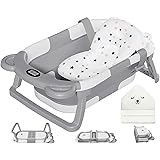Many parents reach a point where their little one’s pacifier becomes a source of stress. What began as a soothing comfort can turn into a challenging habit to break. The pacifier, also known as a dummy or soother, often provides immense comfort for infants. It satisfies a baby’s natural sucking reflex. This can aid in self-soothing and even reduce the risk of SIDS.
However, as children grow, the continued use of a pacifier can lead to potential issues. These include concerns for dental alignment and speech development. It can also disrupt sleep patterns or affect social interactions. The decision to stop a pacifier habit is a common parental dilemma. It requires thoughtful planning and gentle execution. The video above presents a simple, ingenious strategy for pacifier weaning. It offers a practical way to help your child transition away from their beloved soother.
Understanding the Pacifier Habit
Babies often form a strong attachment to their pacifiers. This attachment stems from the oral pleasure and security they offer. It’s a natural part of their early development. Sucking is a fundamental reflex for infants. It provides comfort and helps them explore their world.
As toddlers, the pacifier can become a crutch for various situations. It might be used for comfort during distress, at naptime, or overnight. Breaking this habit is less about deprivation and more about finding new coping mechanisms. It involves gently guiding your child towards independence. Effective pacifier weaning focuses on reducing dependence gradually. It supports their emotional needs during this significant change.
The Gradual Approach to Pacifier Weaning
The video demonstrates a subtle yet effective pacifier weaning method. This strategy involves modifying the pacifier itself. It makes it less appealing over time. You simply take a pair of sharp scissors and snip the very top. This small alteration makes the pacifier feel different. It reduces the satisfying suction. The goal is to make it less enjoyable for your child.
Imagine if your favorite comfort object suddenly felt uncomfortable. Your child experiences something similar. Over several days or weeks, you can make further tiny snips. Each small cut further diminishes the pacifier’s appeal. This gradual process is often more effective than an abrupt removal. It allows your child to adjust slowly. They learn to associate less pleasure with their pacifier.
Why the Snip Method Works for Stopping Pacifier Use
This pacifier weaning technique succeeds because it targets the sensory experience. Children seek specific sensations from their pacifier. A tiny hole changes the way it feels in their mouth. The satisfying suction is no longer present. The oral stimulation becomes less rewarding. This reduces their desire to use it.
The method also avoids direct conflict with your child. Parents aren’t taking the pacifier away. The pacifier simply “stops working” as well. This reduces potential tantrums or distress. It allows the child to naturally move away from it. This gentle disinterest is key to successful pacifier weaning.
Preparing for Pacifier Weaning Success
Before you begin the pacifier weaning journey, some preparation is beneficial. Talk to your child in simple terms. Explain that their pacifier is getting old or “broken.” This sets expectations without blame. Consistency is also paramount during this time. All caregivers should be aware of the chosen strategy. Everyone must follow the same approach.
Choose a calm period for weaning. Avoid starting during major life changes. For example, steer clear of moving homes or welcoming a new sibling. A stable environment helps your child cope better. It provides the necessary emotional support. Their emotional well-being is a priority. This thoughtful preparation increases the chances of a smooth transition.
Setting a Timeline for the Pacifier Habit
Establishing a general timeline can be helpful for parents. The pacifier weaning process is typically gradual. It can take anywhere from a few days to several weeks. This depends on your child’s attachment. Begin by making a tiny snip. Observe your child’s reaction. If they still seem content, wait a few days before making another small cut.
The key is to listen to your child. Some children will quickly lose interest. Others may need a slower pace. There is no right or wrong duration for this process. Prioritize your child’s comfort and emotional well-being. Patience is crucial for this developmental milestone.
Supportive Strategies During Weaning
While the snip method is powerful, combine it with other supportive strategies. Offer alternative comfort objects. A favorite stuffed animal or blanket can provide security. Introduce new activities to distract your child. Engage them in play or stories. This redirection helps them forget about the pacifier.
Provide plenty of positive reinforcement. Praise your child for playing without their pacifier. Acknowledge their efforts and progress. Celebrate small victories along the way. Your encouragement builds their confidence. It helps them embrace independence. This positive approach makes the transition smoother.
Dental and Speech Development Benefits
Reducing pacifier use offers significant developmental benefits. Prolonged pacifier use can impact oral development. It may affect tooth alignment. It can also influence jaw growth. Early weaning supports healthy dental formation. This helps prevent future orthodontic issues.
Speech development can also benefit from weaning. A pacifier in the mouth can hinder proper tongue placement. It might affect articulation and sound production. Eliminating the pacifier encourages more vocal exploration. It promotes clearer speech patterns. Imagine a child speaking clearly and confidently. This is a positive outcome of successful pacifier weaning.
Addressing Challenges and Setbacks
Weaning from a pacifier can present challenges. Your child might experience some distress. They may revert to wanting the pacifier more intensely. This is a normal part of habit breaking. Stay calm and consistent. Reassure your child with hugs and kind words.
If your child is having a very difficult time, pause the process. You can always restart after a break. The goal is a positive experience for both of you. Remember that every child is unique. Their journey will be personal. Trust your instincts as a parent. You know your child best. This resilience will guide you through the process of stopping the pacifier habit.











